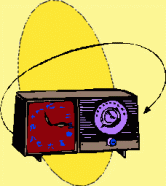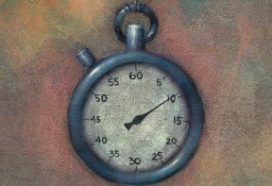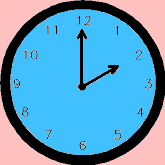A change in time
To help save energy, daylight saving time in the year 2007 will start earlier and end later than it does now.
By Emily Sohn
If you don’t know what time it is, you can probably find out very quickly. Clocks and watches show the time, of course. And so do computers, cell phones, microwave ovens, VCRs, radios, and other devices in our everyday lives.
Twice a year, however, many people must make an adjustment for daylight saving time (DST). In the spring, they have to set their clocks forward 1 hour. In the fall, they have to turn them back 1 hour.
 |
|
There are lots of different ways to find out what time it is.
|
In most of the United States, DST presently begins on the first Sunday in April. It ends on the last Sunday in October, when clocks return to official standard time. That’s about to change. In 2007, according to a law passed earlier this year, DST for most of the United States will begin 3 weeks earlier—on the second Sunday in March. And it will end 1 week later—on the first Sunday in November.
The change may sound minor, but the difference will be noticeable in our experience of dark and light and, some experts say, in the size of our energy bills and in our impact on the environment.
Extending DST will mean that winter mornings will be darker for a while, but late afternoons with daylight will last longer into fall and start earlier in spring. “There’s hope that there will be more time when daylight overlaps with normal activities,” says Tom O’Brian. He heads the time and frequency division at the National Institute of Standards and Technology (NIST) in Boulder, Colo.
A lot of people are up and about in the late afternoon, the idea goes, so we’ll probably use less energy for lighting if there’s more daylight during those hours. That would be better for both the environment and our pocketbooks.
Earth’s tilt
We tend to take for granted the way we measure time. A day has 24 hours, divided into 1,140 minutes or 86,400 seconds. Each day begins and ends at midnight.
As natural as the system seems, however, there’s little that’s natural about it. Although the length of a day is set by the time it takes Earth to make a complete rotation on its axis, 24 hours, 60 minutes, and 60 seconds are simply numbers and units that people chose long ago to measure the passage of time. We could just as easily have days with 117 short hours or 15 very long minutes. Or, we could set our clocks so that it gets light at midnight and dark at 8 a.m.
 |
|
The fact that a minute has 60 seconds, as shown on this stopwatch, was a choice made by people long ago.
|
To prevent confusion, governments worldwide have gotten together to standardize the way we tell time and to establish a system of time zones. In the United States, the National Institute of Standards and Technology (NIST) keeps an extremely accurate clock that sets an official time for the whole country and keeps us in sync with the rest of the world.
Earth is tilted in relation to its orbit around the sun. As a result, winter days have fewer hours of sunlight than do summer days in the northern and southern hemispheres. On the equator, days and nights are the same length, all year round. The further north or south you go from the equator, the bigger is the seasonal difference in hours of daylight.
DST began as a way to save energy by matching daylight hours during different seasons with people’s typical schedules. Nowadays, countries in different parts of the world often have different rules about when it starts and ends and how big the time change is. In Australia and other parts of the southern hemisphere, where summer arrives in December, DST runs from October to March.
Countries that lie close to the equator typically don’t observe DST because daylight hours in these regions are similar all year. For this reason, clocks are also not changed in Hawaii, American Samoa, Guam, Puerto Rico, and the Virgin Islands. There are also exceptions, for other reasons, for part of the state of Indiana and most of Arizona.
Up and about
In the summer where I live in Minnesota, the sun comes up at 5:30 a.m., long before we wake up, and it can stay light as late as 10:30 p.m. We hardly ever have to turn on the lights at home.
When winter comes, however, it’s usually dark when we get up and dark by the time we get home, so we end up using more electricity.
 |
|
The arrival of daylight saving time in the spring means that some kids end up having to wait for the school bus when it’s still dark out.
|
Shifting the clock forward 1 hour makes it seem as if we’ve moved an hour of daylight from the morning to the evening. In this case, 6 a.m. is suddenly what 7 a.m. was before. In other words, DST makes it appear as if the sun rises later and sets later. The arrival of DST in the spring means that some kids end up waiting for the school bus while it’s still dark out, but afternoons and evenings have more sunlight.
The whole system emphasizes the power that time has gained over us, O’Brian says. “Hundreds of years ago, hardly anyone had a clock,” he says. “They based the day on when the sun rises and sets. We don’t do that anymore. We’re driven by the clock, and we try to make the sun rise when we want it to.”
Energy use and the demand for electricity for lighting are directly connected with when we go to bed and when we get up. In a typical home, 25 percent of all electricity is used for lighting and small appliances, such as TVs, VCRs, and stereos. Much of that use occurs in the evening. When we go to bed, we turn off lights and TV. By moving the clock ahead 1 hour and taking advantage of daylight, we can cut the amount of electricity that we use later in the day.
Saving energy
In 1973, as an energy-saving measure, the U.S. Congress passed a law temporarily extending DST. In 1974, DST lasted 10 months, and, in 1975, it lasted 8 months instead of the usual 6 months. The U.S. Department of Transportation studied the effect of these changes and estimated that observing DST in March and April reduced electricity use by about 1 percent, saving the equivalent in energy of 10,000 barrels of oil each day.
The study also found that, because more people traveled home from work and school in daylight, having DST in March and April apparently saved lives and reduced traffic accidents.
 |
|
At present, daylight saving time for most of the United States begins at 2 a.m. on the first Sunday in April.
|
Newer studies, however, have challenged these claims. And times have changed. So, some people aren’t sure that extending DST nowadays will actually save energy. With many more people using air conditioning during warm afternoon hours, for example, increased energy use for air conditioning may outweigh decreased energy use for lighting.
Extending DST also worries people for other reasons. The change would put the United States out of step with Canada and Mexico, its North American neighbors. Airlines flying to those countries would have to make schedule adjustments not only for time zone changes but also for differences in DST.
There are also safety concerns. The late sunrise in the spring would mean that children might be traveling to school in darkness more often.
With the DST change in 2007, many businesses and institutions will have to reprogram time clocks, security systems, timed safes, traffic lights, computers, and other devices that rely on built-in clocks.
In the United States, NIST uses atomic clocks that are accurate to within 1 second every 60 million years to set the official time. To handle the DST extension, “we can just change a couple lines in a computer program,” O’Brian says. “It’s a trivial thing. It would take 2 seconds to change that.”
Your computer probably already automatically adjusts for DST. But when the dates for DST change in 2007, you may have to download new software for your computer’s clock or remember to make the change manually.
Some people even question the idea of having daylight saving time at all. Is it worth going through the hassle of adjusting clocks twice a year? And some people have a tough time adjusting their sleeping habits when the time changes.
In 2007, at least in the United States, we’ll be at the start of a new experiment to see if daylight saving time does really make a difference and can help us save energy.
Going Deeper:







